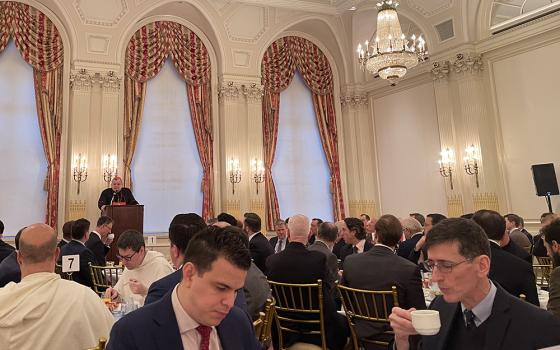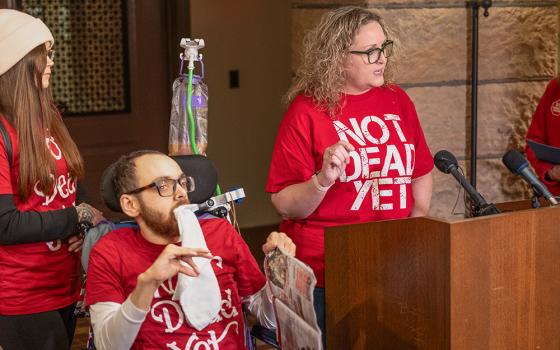
Jesuit Father Luis Espinal was a priest from Spain missioned in Bolivia in the 1960’s. He was assassinated by the military dictators on March 22, 1980 in La Paz. That was two days before the same fate befell the prophetic Archbishop, Oscar Romero, in San Salvador. The thirtieth anniversary of their deaths brings back personal memories worth sharing.
I remember well the last encounter I had with Luis two weeks before his death. It was outside the movie theatre downtown where I had just seen the American movie, “Foul Play”, with Goldie Hawn and Chevy Chase. The musical comedy was a light diversion considering that in those months nightly bombs were set off in La Paz by agents provocateurs of the military to justify the military coup which everyone knew was coming. And it viciously came with General Garcia Meza on July 17.
We spoke of American movies and their escapism as we had so many times before. A friendly conversation which terminated with my advertence to Luis to be careful because we all knew that the military, and others, were not happy with his crusading, critical weekly, “Aqui” (“Here”). In our amenable conversation who would have guessed the foul play that so soon, and so brutally, would terminate the life of the gifted missionary.
The beginning of our friendship was through the Mercedarian Missionary Sisters of Berriz, Spain (who have the Retirement home in Liberty, Mo,) who worked with me in San Antonio parish. With the Sisters we had started a youth ministry and we asked Luis to help us occasionally with talks and programs about movies and the communication media.
As always, Luis was very generous with his time, though besides publishing the weekly, he had been teaching communication courses in both the Catholic University and the State University of La Paz. And this besides making classic movies of social commentary with a Bolivian team, writing a weekly column of movie criticism for the Catholic daily paper, and a weekly radio program. In his generosity he also began helping me with occasional Sunday masses in our growing parish. His visits to the parish gave us many opportunities to converse and discover our many mutual interests.
Before going to Bolivia I was Director of Campus Ministry for the Diocese and Chaplain at the University of Missouri at Kansas City. My experiences of the vitality and renewal of Church of Vatican II in ministry and service coincided with those of Luis, although in very different circumstances. He was born as Spain was plunged into its civil war in the 1930’s. He studied and worked as a Jesuit priest under the fascist dictator, General Francisco Franco, in a culturally Catholic country.
He would explain to me the anomalies and contradictions of that situation as he left Spain under a cloud of censorship for his work. And how he continued to question those contradictions in the military dictatorships of Catholic Bolivia and Latin America in the dark period of Operation Condor with its systematic violation of human rights and human dignity..
I had had the experience of making some TV programs for the Kansas City-St. Joseph diocese. In the University ministry we had regular programs of film criticism and forums about values and ethics using the films of great directors of those times like Fellini, Bergman, Buñuel and others. Those were the days of Marshall McLuhan and “the medium is the message”.
These conversations about communication would inevitably lead us to share experiences and analyze them through the lens of Bolivia. Luis had been one of the leaders in 1977 of a national hunger strike which brought an end to the military control and forced national democratic elections. He wanted to know more about the struggle for human and civil rights of the Afro-American community and the work of Martin Luther King. And why America was assassinating some of its most progressive moral and political leaders.
He wanted to understand better the struggle of believers, university students and intellectuals in the United States organizing social movements against the unjust and unwinnable war in Vietnam. We spoke of those movements and their tactics from Jesus and Ghandi of peaceful, nonviolent protest which campus ministry people across the country were very directly involved in as part of their ministry service.
We also saw the interesting fact that those movements convened together in a common cause believers committed to social justice because of their faith in Jesus, and others, including atheists, who had other ideological justification for their human values. A situation very similar to Latin America where Catholics and Marxists would find themselves in exile or in the same jail cell because of their common struggle for human dignity.
We lamented together that the great Latin American Episcopal documents of Medellin and Puebla were honored more in public discourse than in political and economic practice. And the consequence, that Latin America was killing and exiling a whole generation of its best and brightest citizens.
The 22 of March was the anniversary of my ordination to the priesthood. Fellow missioners were gathered in the parish with me for dinner. Our friendly conversation was interrupted by a dolorous, but not totally unexpected, phone call. Our friend, Luis, had been assassinated. He was brutally tortured and killed by mercenaries acting under orders from the State, as in all of Latin America, who, in the majority of cases, enjoy immunity for their crimes to this day.
One of the radio prayers of Luis had said, “we do not need martyrs, we need people of faith who live out their values in their daily tasks”. The struggle of Luis, and the hundreds of other prophets and martyrs of Latin America like Monseñor Romero, martyred in El Salvador the 24th of March, 1980, continues to this day. Neither their life nor their death was in vain.
Gillgannon is a missionary priest living in La Paz, Bolivia.



